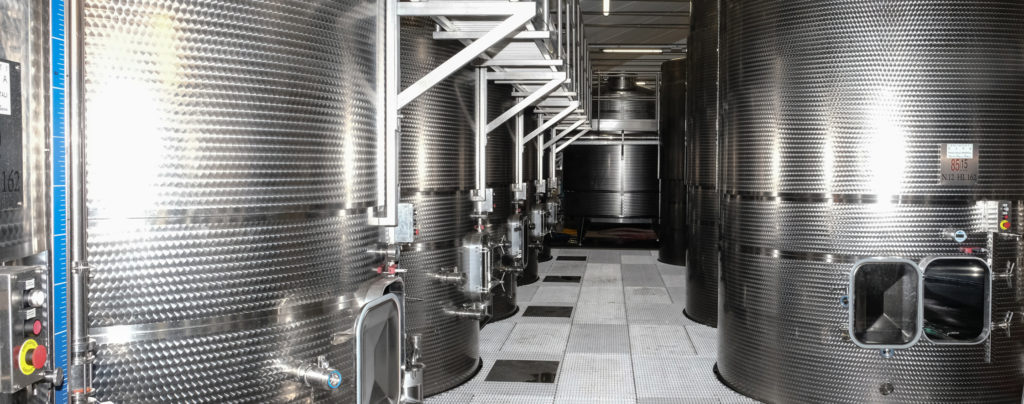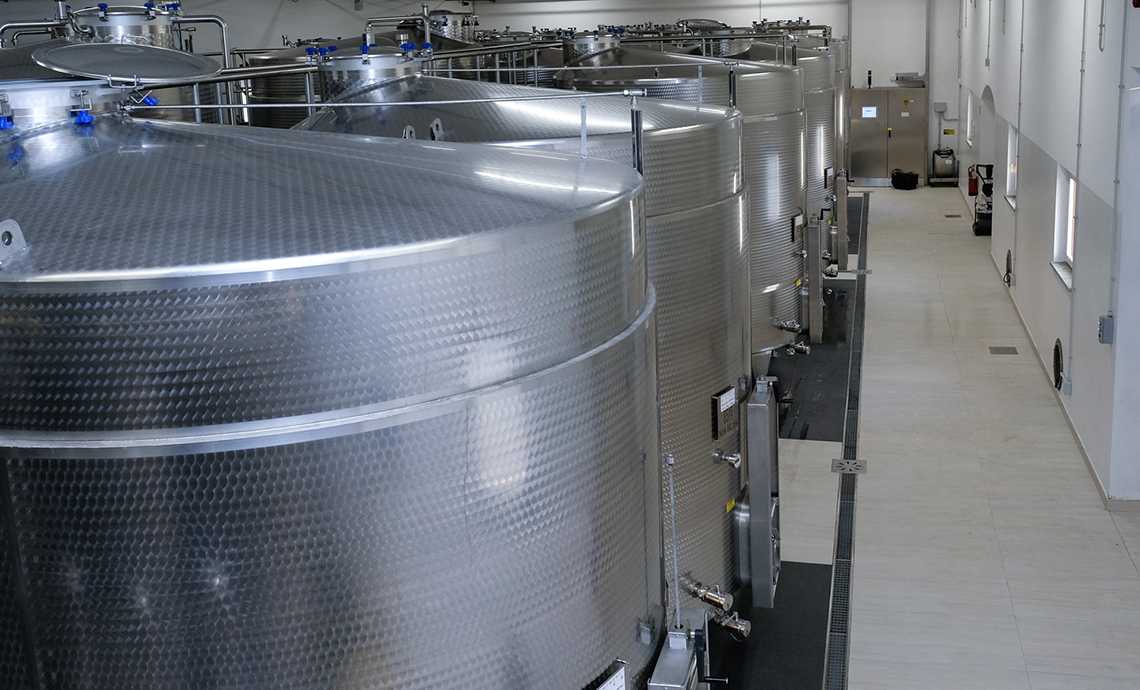The vinification cellar: where to build it and how to organize it
The cellar is the place where vinification takes place, that is, the transformation of grapes into wine. That of Tenimenti Civa is organized into different areas, each one for a specific activity.
Reception of grapes
The grapes are received outdoors under a canopy, where the condition of the fruit is checked. Some bunches are taken and subjected to lab tests; when necessary, carbon dioxide snow is used to lower the temperature of the grapes, and avoid overheating the precious, delicate aromas.
The pressing and fermentation rooms
Pressing and fermentation, i.e. where the grapes are pressed to obtain must and subsequently wine, take place in adjacent areas of the cellar. Mostly stainless steel containers of different capacities are used, from 2,500 to 60,000 litres, the latter housed in the new cellar.
Ageing
For barrel ageing and bottle ageing, suitably low-lit, quiet, temperature-controlled rooms are used. The optimal temperature for storing wine may fluctuate between 10 °C and 12 °C, as long as these values remain constant throughout the year. Wine, in fact, does not tolerate excessive variations in temperature.
The lab
Like many larger wineries, Tenimenti Civa has a laboratory for the analysis of grapes, musts and wines, which is housed in separate premises from the rest of the cellar.
It has sophisticated equipment to carry out important analyses such as the sugar level and acid content of the grapes. These values indicate whether the grapes are ripe and ready to be harvested.

From the destemmer-crusher to the press
After harvesting and sorting, the grapes are crushed with a special machine to release the must. At Tenimenti Civa, this machine is the destemmer-crusher, which separates the stalk from the grapes; only subsequently are the latter pressed.
In this way, the stalks do not come into contact with the fragrant liquid, and harsh green sensations in the final wine are avoided. From the destemmer-crusher, the grapes are transferred to a press and gently pressed to achieve complete extraction of the juice. The machine then separates the grape skins from the must, which is fermented by the yeasts.
Maturing and ageing
Once fermentation is complete, the wine is transferred to the binning cellar where the oak barrels are located. These include 225-litre barriques and truncated conical and cylindrical vats of various capacities.
These are equipped with a small opening (bunghole) in the top, allowing the level of the wine to be checked. Only the vats have an opening on one of the sides, large enough to allow cleaning of the interior.
Cleaning the vinification cellar
Hygiene in all the cellar premises, including machinery and equipment, is essential in order to protect the wine from harmful bacterial attacks. After each use, they are cleaned with chlorinated water and citric acid.
The wooden containers, meanwhile, are washed with pressurised water at 60 °C – 70 °C and left to dry. To protect them from possible fungal attacks, a sulphur disk is lit and left to burn inside the barrels.
The tiles, walls and floors of the cellar are sanitized with detergents. The protection and respect of the surrounding environment are at the basis of all the winery’s operations and decisions. For this reason, all the water used for cleaning is conveyed to purifiers to be itself cleaned. Only after this important operation is it reintroduced into the environment.
The location of the cellar
The location of the cellar is also important. Built facing the north-east, the Tenimenti Civa production facility is sheltered from sudden changes in temperature and enjoys a humidity level of around 60%. This prevents wooden containers from becoming mouldy due to excessive humidity, or drying out due to inadequately damp air.
Follow us on Facebook and Instagram
Maria Cristina Pugnetti
None foundCould it be interesting for you:

